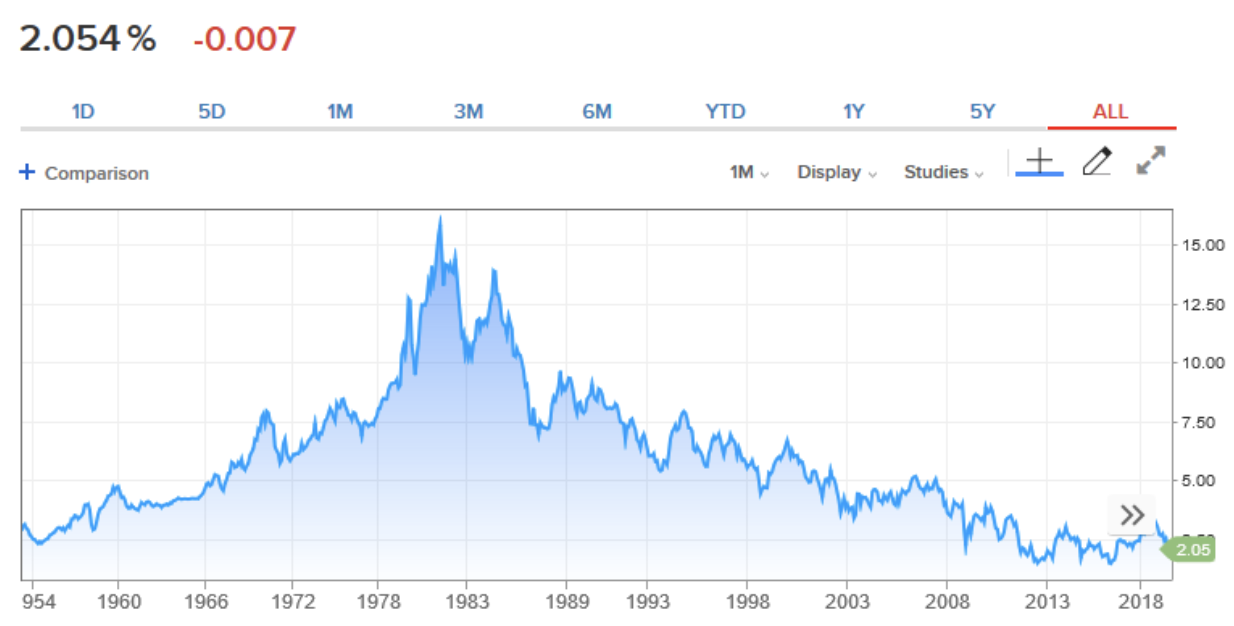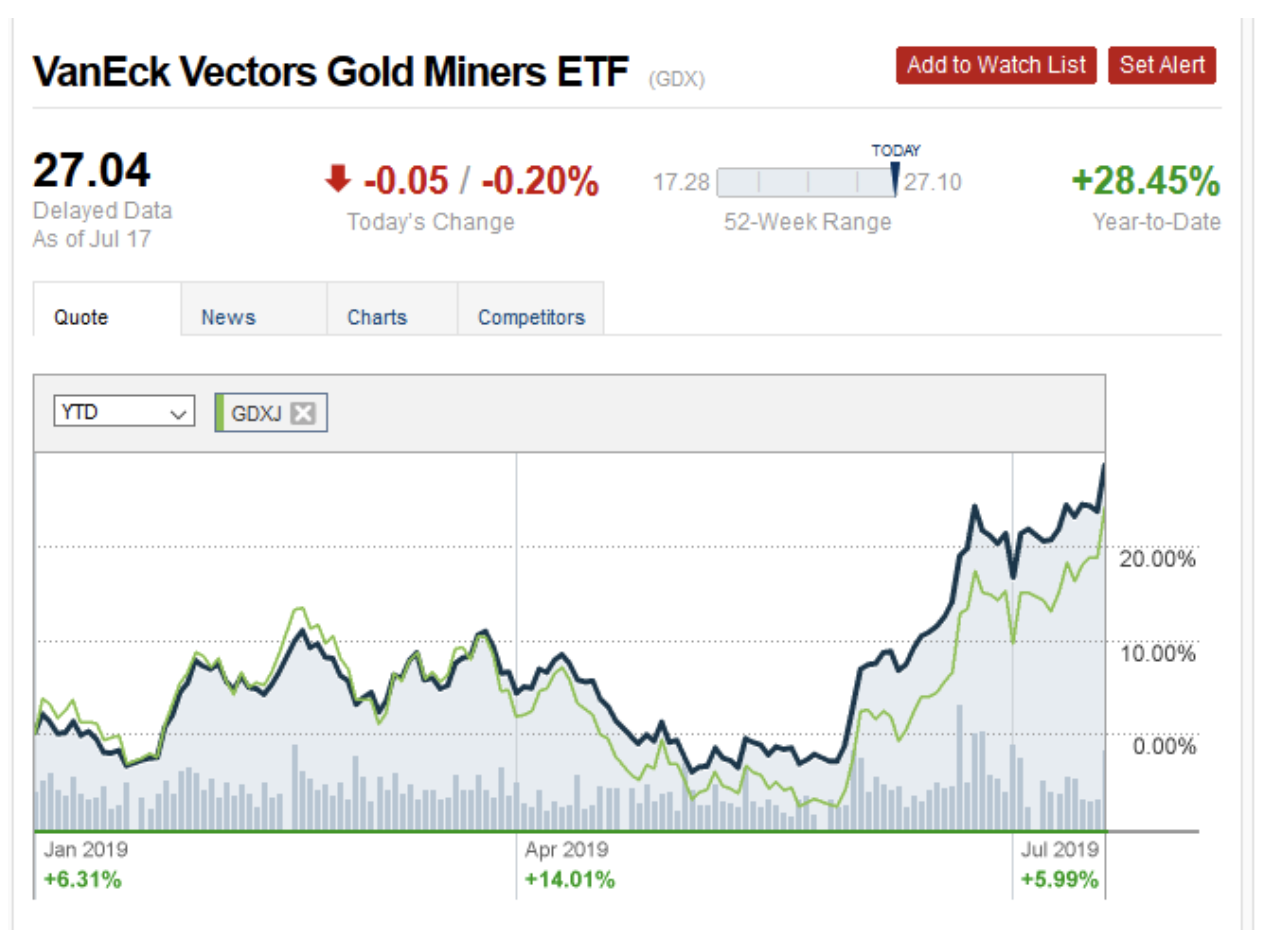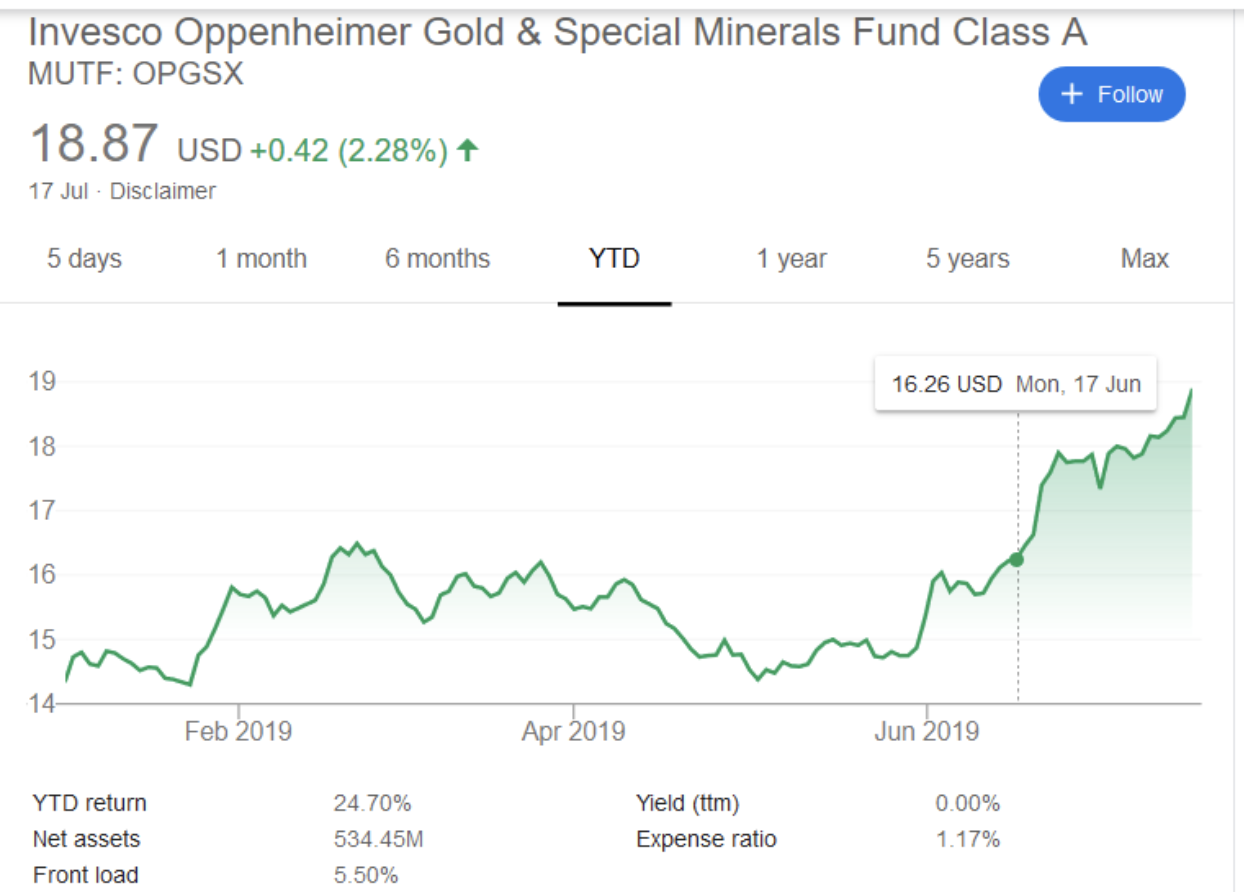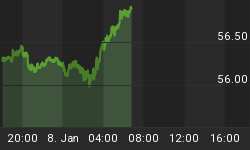Gold is just coming off a turbulent 3-week period after a much-expected rate cut in July failed to materialize courtesy of a stronger-than-expected jobs report for June that sent traders running for the hills. Yet, the latest disappointment has failed to dampen the mood in the bull camp.
Billionaire hedge funder Ray Dalio of Bridgewater Associates has taken to social media to declare that he is now jumping on the gold bandwagon.
In a 7,000-word screed on LinkedIn, Dalio has termed the underlying catalysts driving the gold momentum a ‘Paradigm Shift. ’ He argues that the long-term direction for global monetary policy towards perpetually low interest rates over the past 50 years equates to a paradigm shift which makes the yellow metal a good portfolio diversifier.
The upshot of it all:
“For this reason, I believe that it would be both risk-reducing and return-enhancing to consider adding gold to one’s portfolio. I will soon send out an explanation of why I believe that gold is an effective portfolio diversifier.”
Bridgewater Associates manages $125 billion in assets thus making it the world’s largest hedge fund.

(Click to enlarge)
Source: TradingView
Perpetually low-interest rates

(Click to enlarge)
Source: CNBC
Dalio’s prolix certainly seems to hold water.
It’s easy to get lost in the nitty-gritty of short-term changes in Fed policy. Yet, if you zoom out and look at the bigger picture, interest rates across global economies have been in terminal decline for years--if not decades.
In the U.S., interest rates are at historic lows and have hit a new zero-bound trajectory.
In the year-to-date, 10-Year Treasury notes have declined from a high of 2.78 percent to 2.05 percent currently. Despite the job market throwing an unexpected curveball, traders are still overwhelmingly bullish that the Fed will lower rates sooner rather than later.
In fact, Fed fund futures are pricing in a 93.5-percent chance for a quarter-point rate cut next month with only a 6.5 percent probability for no-rate changes.
The situation is even more dramatic in Europe and Japan with sovereign debt in sub-zero territory in many cases.
For a long time, negative interest rates have been considered an unconventional last-ditch monetary policy tool. Sweden’s central bank was the first to deploy them a decade ago when it lowered its overnight deposit rate to -0.25 percent. Other European banks and Japan have since then followed suit resulting in nearly $10 trillion in government debt carrying negative rates.
Related: Tesla, Apple Claim China Is Stealing Intellectual Property
These policymakers have been using negative rates as a tool to encourage spending and stimulate weak economies.
The ECB has also turned to negative rates as a means to lower the value of the euro and stimulate demand for exports. Below-zero rates are a high-risk strategy because they could potentially backfire by discouraging banks from lending if profit margins get squeezed too much.
However, central banks in the region have little recourse with the European Commission recently lowering regional growth projections from 1.9 percent to 1.5 percent for the current fiscal period.
Playing the gold bull market
With central banks everywhere forced to adopt a decidedly dovish stance, it appears like gold is set for a long-term bullish trajectory. The million dollar question now is how to position yourself for maximum returns.
Bullion prices are up 11.4 percent this year; however,they have nothing on gold stocks which have been on a roll.
Gold stocks are a levered play on the yellow metal, amplifying its moves 2x-3x. Stocks of both gold juniors and their heavyweight brethren are up more than 2x relative to bullion.
The VanEck Vectors Gold Miners ETF (GDX) is up 28.45 percent YTD while VanEck Vectors Junior Gold Miners ETF (GDXJ) has racked up gains of 24.75 percent.

(Click to enlarge)
Source: CNN Money
For more adventurous traders, Invesco Oppenheimer Gold and Special Minerals Fund (OPGSX) provides diversified exposure to gold and other precious metals. OPGSX has rallied 31.6 percent in the year-to-date.

(Click to enlarge)
By Alex Kimani for SafeHaven.com
More Top Reads From Safehaven.com:

















